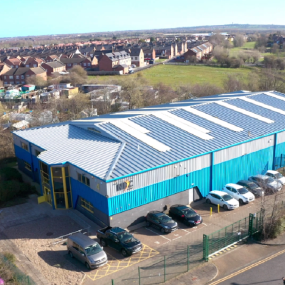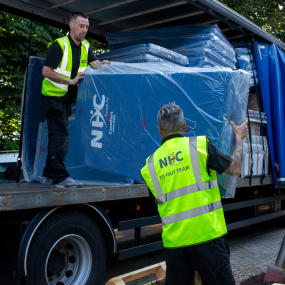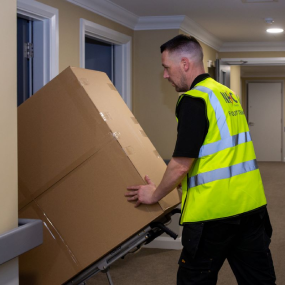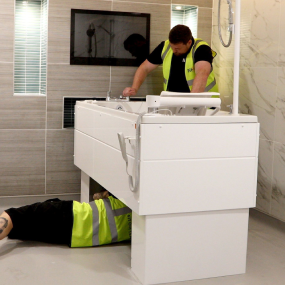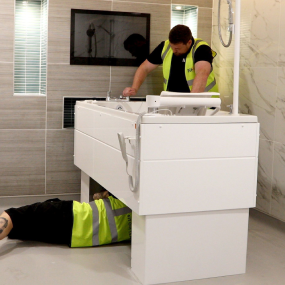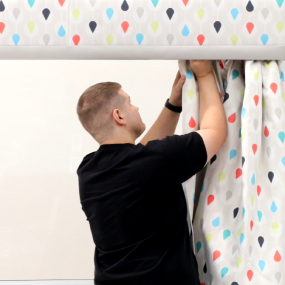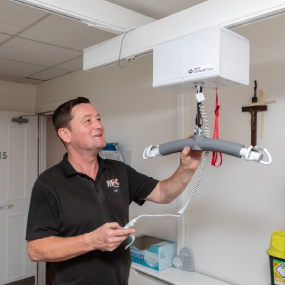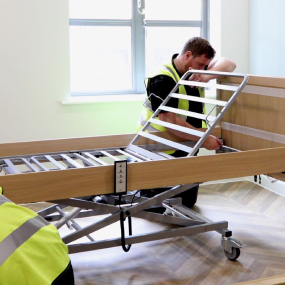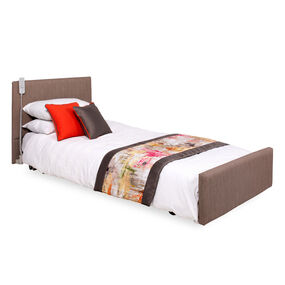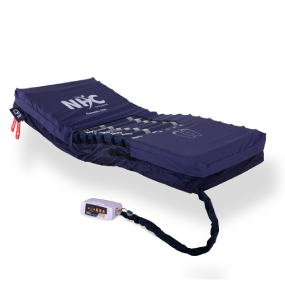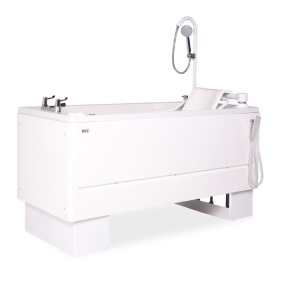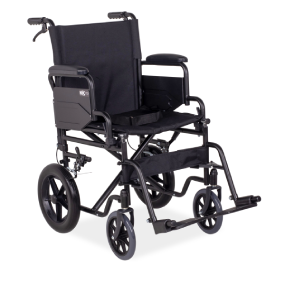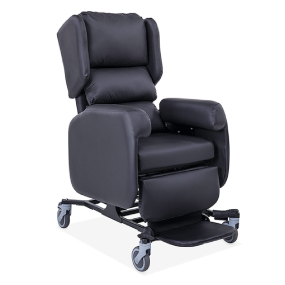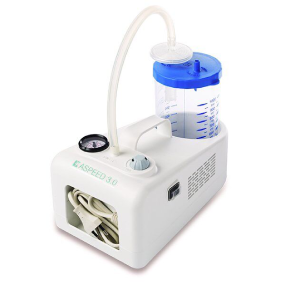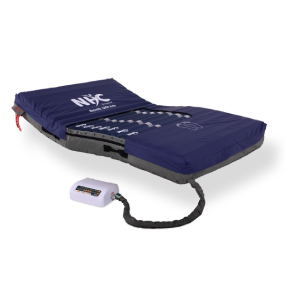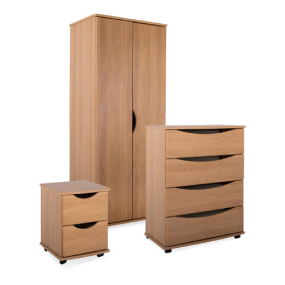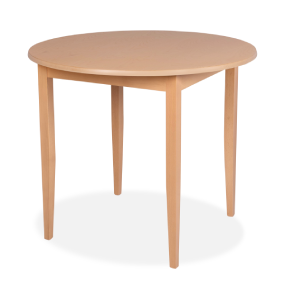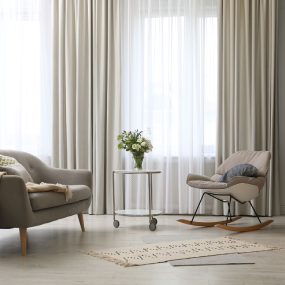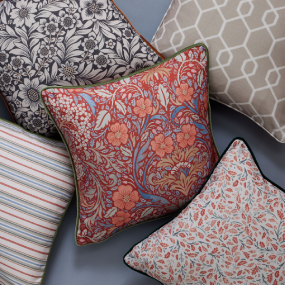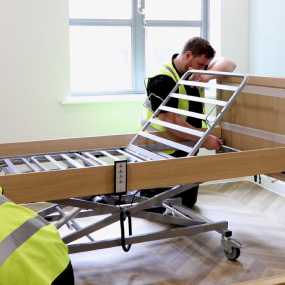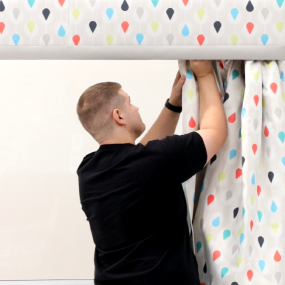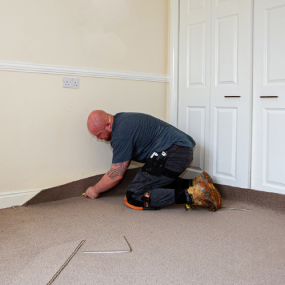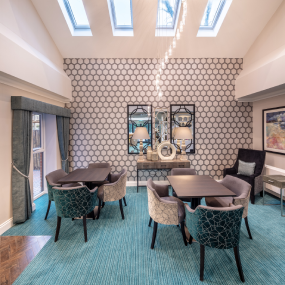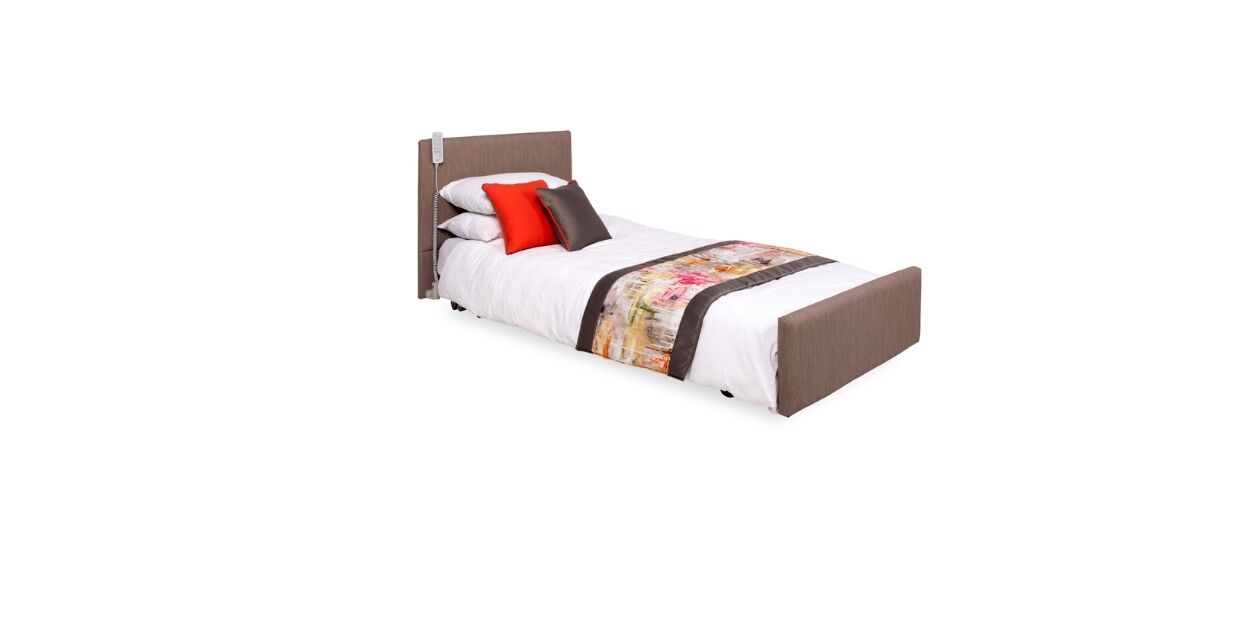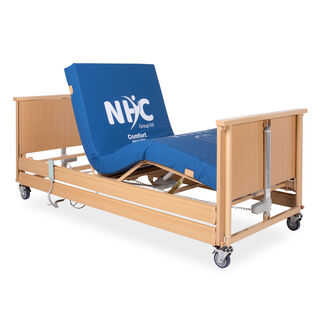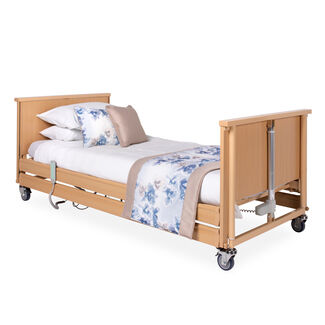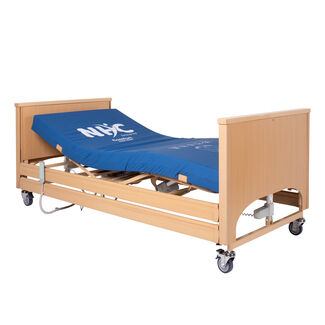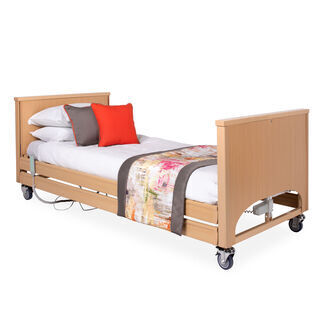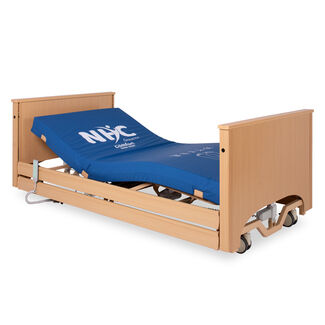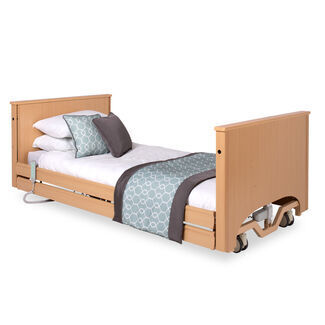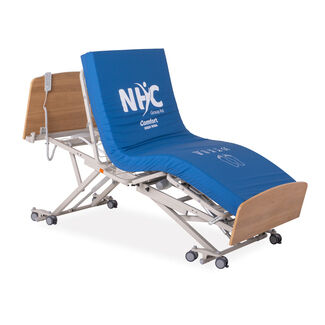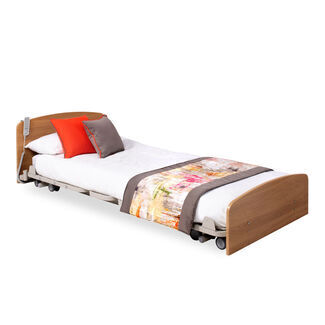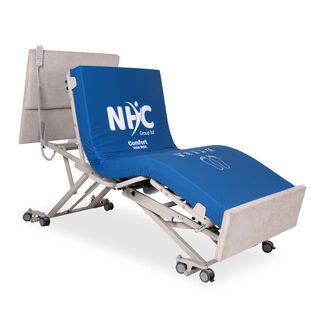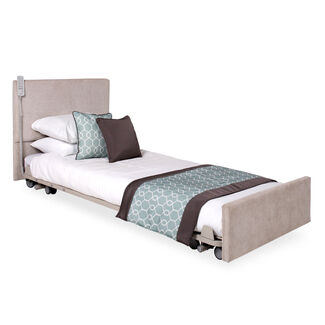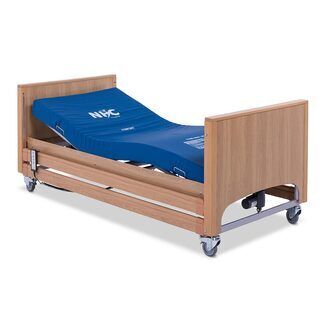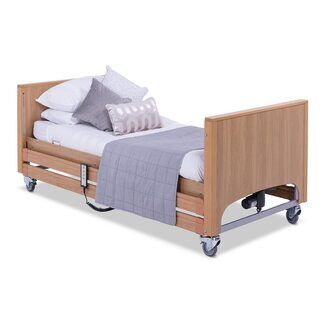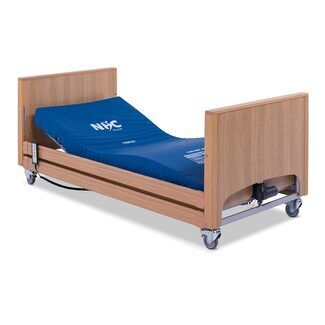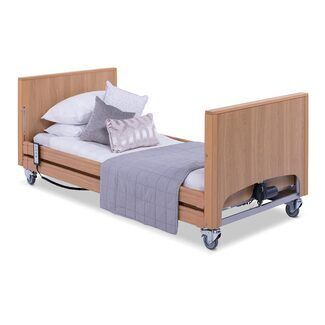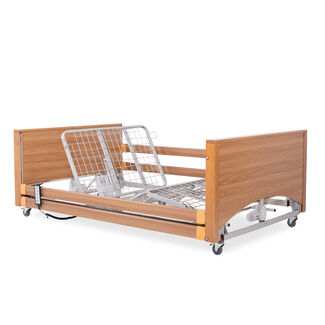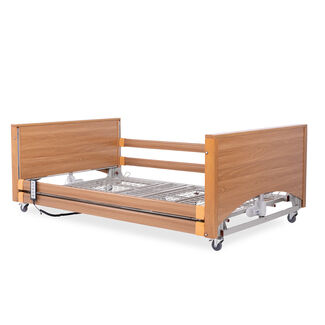Free Next Day Delivery*
White Glove Delivery & Installation Service
Nursing Equipment Servicing & Maintenance (LOLER)
Cost Efficiencies For Large Volumes
Electric Profiling Beds for the Elderly and People with Limited Mobility
Profiling beds are ingeniously crafted to support those with severe or critical health needs, ensuring they remain as comfortable and healthy as possible while in bed. These beds are pivotal in aiding relaxation and promoting restorative sleep. Equipped with high-powered motors, electric profiling beds adjust effortlessly, raising the head or legs with minimal fuss. This functionality ensures optimal comfort and support at all crucial times.
Ideal for both residential and care home environments, profiling beds for the disabled are designed to seamlessly integrate into various care environments. Their adaptability makes them an essential component in providing tailored care, enhancing the quality of life for individuals requiring specialized support.
Refine Selection
Current Selection
Colours
Sizes
Brands
Product Warranty
Side Rails
Adjustable Height
CPR Function
Bed Extension
Height Range
Max User Weight
Gender
Price
What Are Profile Beds?
Profile beds are a type of adjustable beds that have been designed specifically to aid people with limited mobility. Profile beds are split into sections that can be easily moved together or separately, either manually or electronically, and adjusted to meet the user’s needs.
Profile beds come in a variety of shapes and sizes, offering different functionality and specification options depending on the type of support the user needs. A Profile bed can be used at home, to enhance the comfort of your own bedroom, in a care home or in hospitals.
These beds are suitable for caretakers, who can move the patient more easily with electronic support or with manually adjusting the position of the different sides of the bed. But profiling beds can also be used by the patients themselves, to enhance their own comfort and provide them with more freedom of movement. Double profiling beds come with independent positioning options on each side to suit many different needs and preferences.
Who Needs a Profile Bed?
A care home or hospital profiling bed can make a world of difference in the lives of several categories of people:
- Elderly with limited mobility
- Disabled people
- Care home nurses and caretakers (studies have shown a reduction of 62% in the number of manual handling operations per patient)
- Accident victims who need a profiling bed for a limited period of time
- Patients recovering from major surgeries or procedures
- Anyone confined to a bed for more than a few days.
Profiling beds can improve the quality of life for the users and also make patient moving easier for their caretakers. Transfer and egress from bed are far easier, irrespective of the level of mobility of the patient. For people in long-term care, they are an ideal way to limit pressure ulcers, according to recent studies.
But not all profile beds are made equal. It’s essential to know their main features and options so you can choose the right one for you or for the people in your care. Let’s take a quick look at the essential features of profile beds.
Essential Features of Hospital Profile Beds: How to Choose the Right Bed for Every Specific Need
These are a few of the benefits of hospital profiling beds. According to the type of care patients need, you can choose beds with all these features, or a combination of a few of them:
- Adjustable backrest: this is the most common feature of profiling beds and the one that makes the biggest difference. With adjustable backrest, patients can sit up easily and without outside help and socialise more comfortably. Moreover, the adjustable backrest can help with recovery, improving postural support and respiratory functions. Movement can be controlled with a manual pump for manual profiling beds or with a bedside handset that can be controlled by the patient or the medical staff, in the case of electric beds.
- Knee brake: located just behind the knees, the brake can prevent the patient from sliding down the bed by simply raising it. When the user is sitting up, it helps maintain a more natural position. The knee brake function also helps increase the circulation in the lower legs.
- Height adjustment: with a flexible height, transfers are made far more easily. Moreover, if a patient has the risk of falling out of bed, it helps if the bed is closer to the floor. You can simply lower the bed at night, thus reducing the possibility of injury.
Newer profiling beds come with more advanced features. These beds are almost always electric, which allows for easier use by the medical staff:
- Trendelenburg and anti-Trendelenburg (or reverse Trendelenburg) positioning: these positions are to be used only under medical supervision. They are designed to alleviate pressure, to help treat air embolism, to assist with the distension of the upper central veins, and more.
- Chair (Fowler) positioning: these profile beds allow the user to sit comfortably as they would in a chair -- the upper body is elevated and the legs are below the horizontal line.
- Rastofix: this option comes with a bracket for the manual adjustment of legs and to provide leg elevation when needed. Typically, this function is operated by the caretaker.
- Side rails: designed to prevent the user from falling out of the bed, side rails can come in many shapes and materials, including foam to prevent injury.
Why Choose the NHC Group as Your Care Home Profile Beds Supplier
We provide a variety of electric medical profile beds that can be used in care homes and for care at home to help assist those who are elderly and disabled, as well as users with mobility problems.
When you work with NHC Group, our expertise is always at your service. We can help you choose the right hospital profile bed for your needs and advise you on buying the electric profile beds that don’t exceed your budget. Furthermore, you will get a turnkey service: the profiling beds, along with dozens of mattress choices, maintenance and servicing for them – all under the same roof.
We have a great range of electric medical beds in the UK available for pressure treatments, and many other therapies. We have been an established company since 2002, so you can trust us to make sure that you are getting a great deal on your profile bed.
Take a look below to see our full range of beds, and to find out more about the product, simply click the one you want to know more about. However, if you need any help figuring out which electric medical profile bed is right for you, please do not hesitate to get in touch with our friendly team of experts who would be more than happy to help with any questions you may have!
What is a profiling bed?
A profiling bed is split into two or more sections that can be manually or electronically moved to ensure more comfort and more independence for people with limited mobility.
Are all profile beds the same?
No, profiling beds come in a variety of shapes and sizes: for children and adults, for people with temporary limited mobility, for reducing pressure ulcers, and more. Depending on your needs, you can choose a bed with several features that ensure the comfort of the user and enhance their mobility and independence.
Do I need a special mattress for my profile bed?
Yes, most profile beds need a special mattress that can be split into sections. Moreover, you can also choose a pressure mattress with air pockets that helps prevent pressure ulcers. Most common types of mattresses for profiling beds are foam mattresses (latex, memory, or reflex foam) and air or hybrid mattresses.
How much does a profiling bed cost?
If you are looking for a cheap profiling bed, the prices start at £600-£800. More advanced profiling beds typically cost more than £1000. You can always start with a basic bed and then add more features as you go (like side rails, for instance). As expected, double profile beds are the most expensive, around £4500.
How much does a profile bed mattress cost?
Mattresses for profiling beds typically start around £250. The prices can go up or down, depending on their size, the type of materials the mattress is made of, and the functions and features it has.
Is there a bed that can help me stand up?
Yes, turning beds can help you stand up without any assistance. The mattress platform on these beds can be adjusted so you eventually end up sitting with your legs over the side of the bed.
How can I prevent pressure injuries and pressure ulcers?
For patients in long-term care, pressure injuries are a real problem. The best way to help prevent them is to invest in an air mattress that prevents pressure ulcers and sores. Pressure injuries are typically caused by the tissue being starved of air. This is exactly where an air mattress helps: by using different patterns and a wide array of motion, the air in the mattress prevents pressure build-ups and promotes better circulation in the areas of the body that are most vulnerable to pressure ulcers and sores.
How can I prevent falls from bed?
There are several ways to prevent the people in your care from falling out of bed:
- Use positioning supports like cushions or tube-shaped pillows near the edge of the bed. These simple accessories can provide a reminder to the user that they are nearing the edge of the bed and they are at risk of falling.
- Side rails are the ideal way to prevent falls, especially in children. The rails can be added to almost any bed and they can be taken out when needed, thus making the maneuvering of the user much easier.
- Height adjustable beds can be lowered during the night. In case a fall does happen, lower beds minimise the risk of serious injury.

